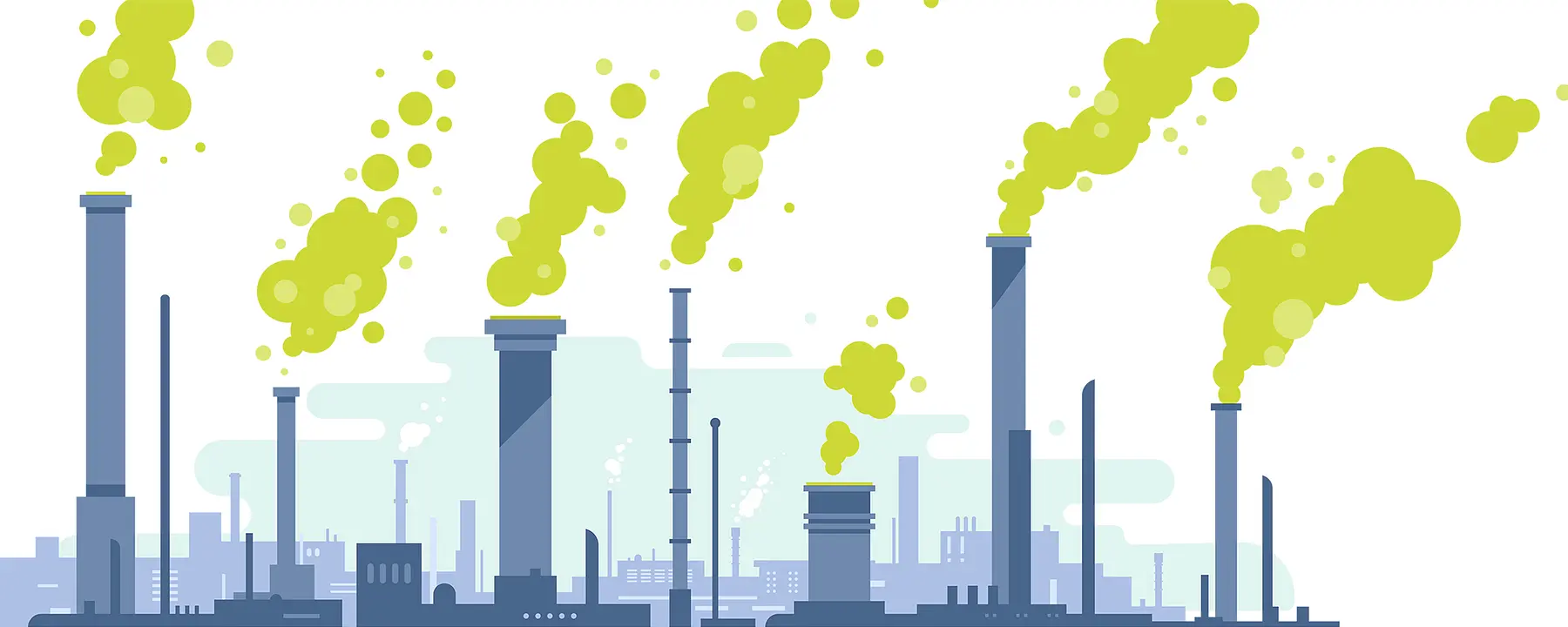New carbon capture technology proves effective for removing CO2 from natural gas combustion exhaust streams – a significant step in reducing carbon emissions
Objective
To reduce carbon emissions in industrial fossil fuel settings.
Approach
We partnered with SLB, a global leader in energy technology, and CEMEX, a cement and concrete construction company, to design carbon capture plants using our non-aqueous solvent technology.
Impact
Our work shows the industrial application required for reducing carbon emissions in current energy and construction industries.
Climate change is the result of a long-term shift in global temperature and weather patterns. While minimal climate change is natural, the drastic increase of heat caused by human activities, including the burning of fossil fuels, is accelerating the process. Fossil fuels remain the primary source of energy for industrial, transportive, and home heating needs.
With Earth’s temperature rising at an increasing rate, industry leaders, activist groups, researchers, governments, and communities are looking for real-time solutions. Because alternative energy resources are still being developed, a solution is needed to address current carbon dioxide emissions.
Creating affordable and effective non-aqueous carbon capture technology
RTI is at the forefront of creating solutions for the climate crisis. For over 14 years, we have studied carbon capture, a process which involves capturing carbon dioxide (CO2) in a solvent before the gas enters the atmosphere and then returning it to Earth’s core. With funding from the U.S. Department of Energy (DOE), RTI’s non-aqueous solvent (NAS) technology has proven to be a successful cost-effective solution for eliminating industrial CO2 emissions. The technology works by flowing the solvent down an absorber column where it bonds to the CO2, leaving only water, nitrogen, and oxygen emitted into the atmosphere. With years in the working, RTI’s carbon capture NAS can remove over 99% of CO2 emissions — significantly higher than competitor aqueous solvents.
While creating the solvent, RTI scientists were presented with several challenges. Leaders in the fossil fuel industry have been unable to adapt affordable carbon capture technology. RTI’s NAS technology is unique because it uses less energy during the regeneration part of the CO2 scrubbing process. Consequently, the price for carbon capture has decreased from approximately $56 per ton to approximately $42 per ton. The DOE currently targets achieving a cost of $30 per ton CO2 captured by 2035.
After creating and testing the NAS technology at our facilities, we demonstrated its capabilities in Norway at the Technology Centre Mongstad — the world’s largest CO2 capture testing facility. This achievement allowed RTI to partner with industry leaders and rethink solutions to further improve the NAS technology and achieve DOE’s goal.
Read more about RTI’s development of NAS technology.
RTI partners with SLB – a global technology company, driving energy innovation for a balanced planet
Our work caught the attention of SLB (formerly Schlumberger Limited), a global leader in energy technology. In 2022, RTI and SLB formed an agreement to use NAS technology in SLB’s carbon capture process offerings. The agreement includes collaboration between the groups to design CO2 capture plants, which SLB will install and operate at client facilities to lower the clients’ global carbon footprint. This is one of many steps that will significantly reduce carbon emissions in many industries including the oil and gas industry.
Partnering with CEMEX to conduct FEED study for carbon capture system
Additionally, the success of RTI’s NAS technology led to a partnership with CEMEX, a construction materials company that specializes in the production, distribution, and sale of cement, aggregates, and ready-mix concrete. The partnership, funded by the DOE, will set cement manufacturing industry emission reduction standards through a front-end engineering design (FEED) study using RTI’s NAS technology. The 18-month project will be held at CEMEX’s Balcones Cement Plant located in New Braunfels, Texas.
The FEED study aims to:
- Evaluate the carbon capture of cement flue gas with RTI’s NAS technology
- Assess and determine the cost of 670,000 tonne-C02 per year commercial-scale carbon capture system integration
The study is one of many steps CEMEX is taking to reduce CO2 emissions by 40% by 2030 through its Future in Action program. Cementitious products are a leading cause of industrial CO2 emissions, and without an alternative product for the construction industry, limiting their global effects is critical.
Carbon capture – one of many ways to address climate change
Carbon capture through NAS technology is a tangible solution for mitigating climate change. RTI’s success at lowering the cost of carbon capture in industrial settings proves that real-time solutions are available, allowing power plants and other industrial facilities to operate without negatively affecting climate change. As our research evolves, we anticipate improved versions of our NAS technology to further lower its cost and increase its efficiency. Our work in climate change is a testimony to RTI’s dedication to improving the human condition by creating a safer environment for future generations.
Learn more about RTI’s carbon capture and utilization and climate solutions.
- U.S. Department of Energy (DOE)
- CEMEX
- SLB

